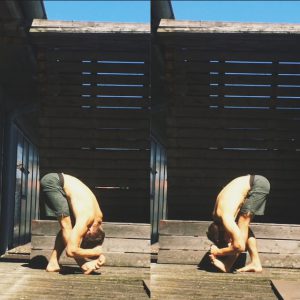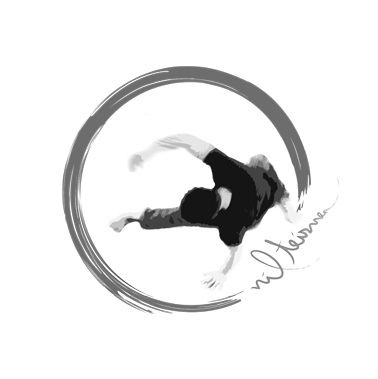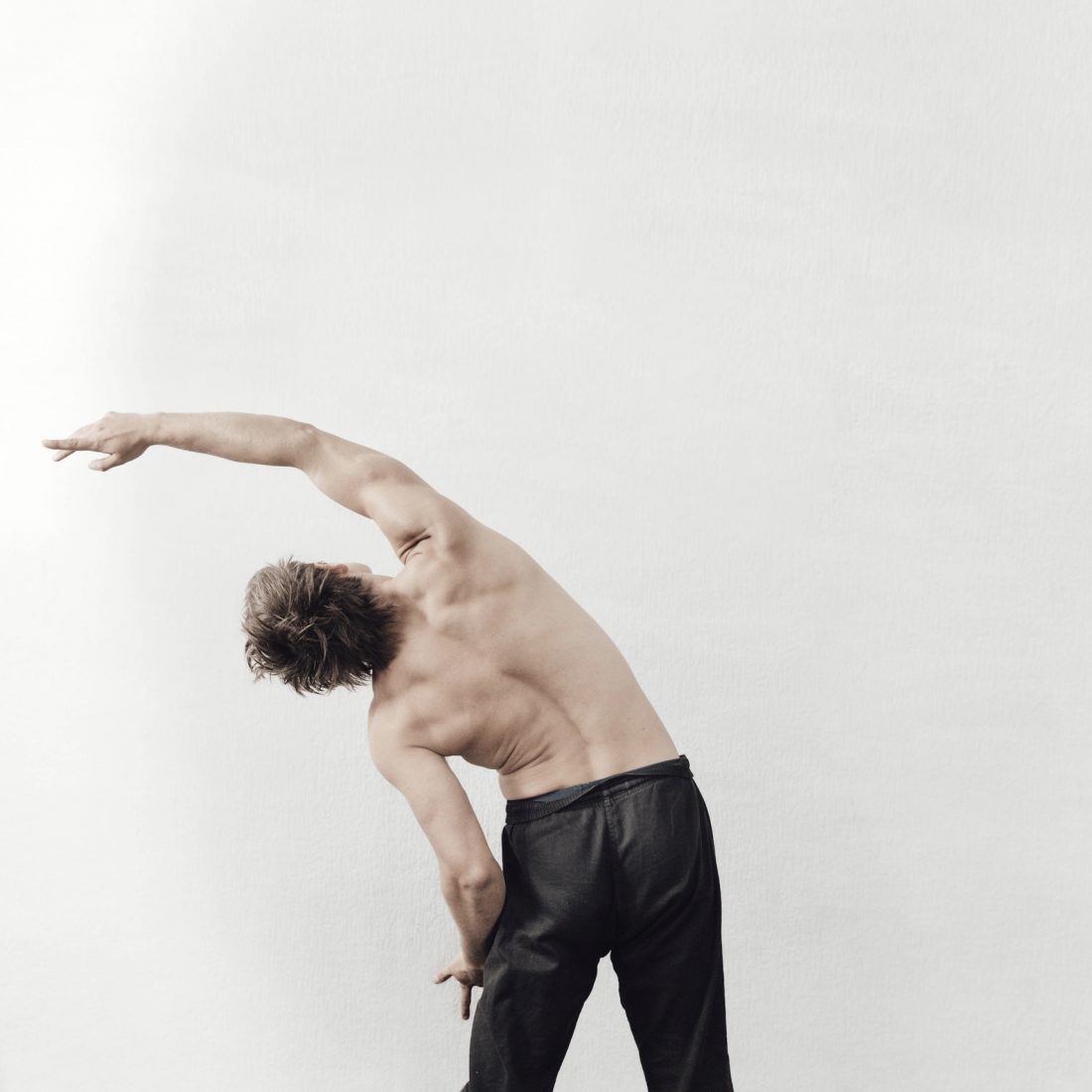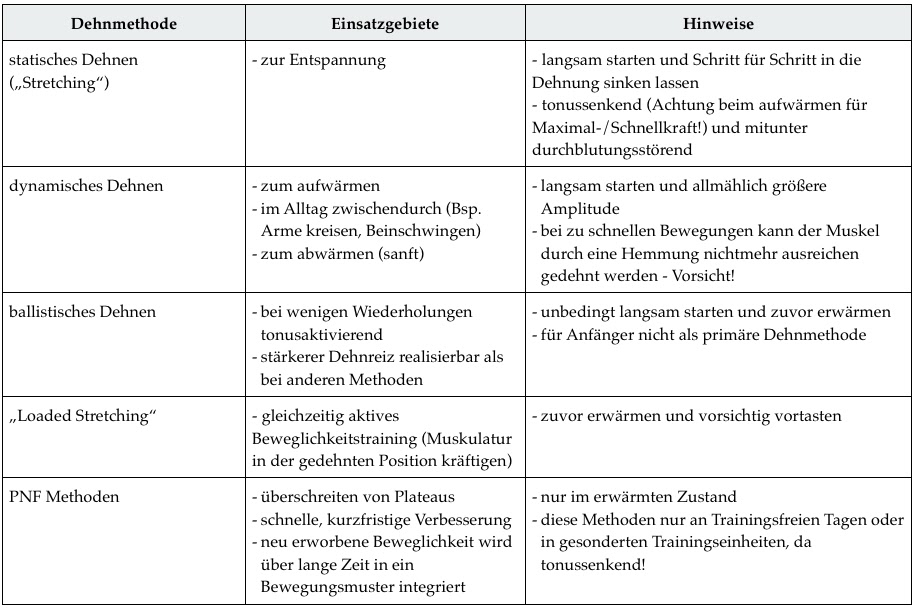Mobility: Basis for Movement Part 3
In this third part of the article on flexibility, I will introduce you to different methods of flexibility training, show you when which method is best and give you a summary of the whole article.
How do I become flexible? – Find out here!
1 What is flexibility?
1.1 Basic concepts
1.2 Physiological mechanisms
1.3 Forms of mobility
2 Why train flexibility?
2.1 Effects and benefits of flexibility training
2.2 Factors influencing flexibility
2.3 Myths
3 How do I become mobile?
3.1 Methods
3.2 Timing of flexibility training
4. summary
3 How do I become flexible?
The “How?” is probably the most interesting question in the context of this topic and also the reason why you are reading this article in the first place. That’s why I’ve written the third part a little more concisely, so that you don’t have to slog through all the theory, but learn straight away what you can do to improve your flexibility.

3.1 Methods
Static stretching: As already described in the first part, static stretching is the prolonged holding of as large a joint angle position as possible. An example of this would be staying in a split. Static stretching is also known as “stretching” and is usually associated with flexibility training.
[youtube https://www.youtube.com/watch?v=6kkXDJmtEHU]
Dynamic stretching: In contrast to static stretching, this means assuming a maximum joint angle position only for a very short moment. This is achieved through springy movements. An example of this is swinging a leg back and forth, as often seen in martial arts warm-ups.
[youtube https://www.youtube.com/watch?v=YtbJ–W4wgY]
In the course of dynamic stretching it makes sense to look at the term “ballistic stretching”. Ballistic stretching is more intense and aggressive compared to the springy movements in the classical sense of dynamic stretching. The individual impacts are performed in such a way that an almost maximum stretching position is reached for a very short time. Due to the high number of repetitions (in many cases up to 100 pushes are documented) and the thus accumulated time in the stretch, one hopes for an increased effect compared to only light dynamic stretching. Important here: ballistic stretching should only be warmed up and used by advanced practitioners. A little food for thought: If you think about it carefully, kettlebell swings are a form of ballistic stretching, because in the lower position you bring the back chain (back of the thigh, buttocks) into tension a little bit each time. This principle can be transferred to many other movements and exercises …
[youtube https://www.youtube.com/watch?v=xmD529v97nY]
“Loaded Stretching”: Loaded stretching is a sub-form of static stretching, or more precisely of active-static stretching (remember: active means under tension of the muscles and thus a simultaneous activation of the nervous system). As the name suggests, additional weights are used to help you get deeper into the stretching position. However, this method should only be performed after a warm-up and by advanced practitioners.
[youtube https://www.youtube.com/watch?v=NpGO6IzSDYY]
PNF (Proprioceptive Neuromuscular Facilitation) methods: From here on it starts to get very scientific. The following stretching methods use little tricks to stimulate the nervous system to allow more intense stretching positions. I can explain the exact principles on request, but I will only give a very brief summary here. The following methods are, in my opinion, the most suitable for making rapid progress in terms of flexibility, but the body should have been well warmed up so that the risk of injury is minimised.
– Antagonist Contract / Reciprocal Forward Inhibition: The principle here is as follows: The antagonist of the muscle being stretched is tensed to the maximum during the stretch. This causes the stretched muscle to relax (inhibited by switch cells) and can thus be stretched more intensively. Basically very logical: let’s look at the biceps and the triceps, two muscles of the upper arm that have as one of their tasks the bending and stretching of the elbow. When the biceps tense, the triceps relax and the elbow bends. If the triceps were to go into a state of tension at the same time, there would either be an isometric contraction (a static/sustained tension) or a cramp. This principle can be applied to almost all areas of the body. Examples: Stretching hip flexors and tensing buttocks, stretching calf in bent knee position and tensing front shin muscles, etc….
[youtube https://www.youtube.com/watch?v=8LL7I9EvJqI]
– Contract Relax / autogenous inhibition: This method involves tensing the muscle submaximally (“a 7 on a scale of 1-10”) before a stretch and then moving deeper into the respective stretch position with the exhale. The contraction should take place without changing the joint angle and last for about 5-8 seconds. With the exhalation you relax the muscle again and let yourself sink deeper into the stretch. In total, you can go through several of these cycles per stretched muscle. It should be clearly noticeable that a new muscle length can be realised after each contraction.
[youtube https://www.youtube.com/watch?v=94gCK97cQkM]
– Contract Relax – Antagonist Contract (hybrid): In this combination of Contract Relax and Antagonist Contract (note: CRAC), the target muscle is slightly stretched, then a cycle of Contract Relax is performed and then statically stretched using the Antagonist Contract method. You can also go through this sequence several times. Personally, I have made very good progress in terms of flexibility with this combination and can recommend it with a clear conscience.
[youtube https://www.youtube.com/watch?v=Q3MQro_Zcds]
MFR (Myofascial Release)/ Self Massage: The term myofascial release means releasing adhesions, tension or hardening within the fascia (a special type of connective tissue) or muscles. These massage techniques can be performed on oneself using various rollers, balls or self-massage tools. I will write a separate article on the topic of MFR and working with massage tools. However, what I want to say in advance is that the combination of stretching methods, relaxation methods and massage techniques achieves the best results in most cases, as individual solutions often reach their limits. For example, classic stretching methods are more difficult to relieve tension than massages.
Relaxation techniques: The aim of many relaxation methods is to reduce muscle tone (the resting tension of the muscle). There are many ways to achieve this: Breathing exercises, meditation, baths, sauna, autogenic training or progressive muscle relaxation. Another article will follow on this topic. The Take-Home Message: Relaxation is a very important factor that can influence flexibility. Often (except perhaps with dynamic stretching as an activating warm-up method) a state of relaxation is a very good indication of successful flexibility training.
3.2 Timing of flexibility training
In order to keep the topic simple and clear, I have created a table that shows areas of application for stretching methods.
General advice:
Listen to your body: Like so many things, flexibility is very individual and difficult to generalise. Whatever stretching method you use, it has to feel right. However, if you have the feeling or the experience that it is sufficient to stretch statically and you still achieve your goals, that is completely okay. Other people, however, have a very high muscle tone and are almost permanently in tension. PNF methods and especially massage/relaxation measures could help here. Listen to your body and try out many things. And above all …
Be patient: As already written in the first articles, the body needs time to adjust to the stretching stimuli. It also takes time for your pain tolerance to increase and for you to be able to do more intense stretches. Just remember that you have (often) not put your body in such joint positions for a very long time. Your body (connective tissue, muscles, tendons, etc.) has simply adjusted to the amount of movement you actively use and now needs to readjust. Give your body the time it needs. The last thing you want to risk is injuries that can affect your training and everyday life.
Be relaxed: An extremely important aspect of flexibility training is breathing. I will only briefly touch on this complex topic here. In short: calm, fluid breathing is relaxing – holding your breath and spasming is stimulating and activates the sympathetic nervous system (reminder: fight or flight mode). Always try to take deep and fluid breaths when stretching. This signals to your body that it can relax and allow deep stretches. A simple tip: Inhale loosely and go deeper into the stretch with the exhalation. Repeat until you reach a point where you can feel the stretch.
Be consistent: Consistency is key! The body adapts best when a stimulus is applied with sufficient intensity, sufficiently often. But how often is enough? That depends on what your goals are: The higher your goals are – for example, doing the splits – the more often and stronger, the lower – for example, maintaining your own flexibility – the less often the stimuli may be exercised. In general: spend as much time as possible in positions that promote your mobility. Examples: Don’t just use the squat as a strength exercise, but for example spend time in a deep squat while reading (see Ido Portals Squat Challenge), next time eat in a straddle seat or simply hang from the door frame and improve your overhead mobility at the same time. Again, it’s Use it, or Lose it!
[youtube https://www.youtube.com/watch?v=QCmHOTN_FIw]
4. summary
Finally, I would like to give a brief overview of the entire article and summarise the essentials. There are different terms around the topic of the article: mobility, stretching ability and flexibility. Each of these terms describes different components of mobility. The physiological mechanisms behind the topic are not yet 100% scientifically proven, but they already give important clues as to which structures are involved and how much they can influence mobility. A distinction is made between different forms of mobility, including active/passive, local/global and static/dynamic. This is important because it can be used to derive methods of mobility training and their effects. On the one hand, there are endogenous factors that influence mobility, such as age or gender, and on the other hand, exogenous factors such as time of day or fatigue after exertion. The positive effects of flexibility training are far-reaching. These include the realisation of new movements, the release of tension and positive effects on strength, speed and even endurance. Unfortunately, there are still many myths about flexibility training. For example, it is falsely claimed that stretching before or after training serves as a muscle soreness prophylaxis, whereas the opposite is often the case. Finally, I have shown what flexibility training can look like. There are different methods with different areas of application. The quintessence of the article: this topic cannot be generalised so simply. Depending on individual goals and conditions, there are different approaches and strategies. Listen to your body and take a relaxed approach.
“Movement makes you mobile – and mobility can set many things in motion.”
– Paul Haschek
I hope you enjoyed my article and that you were able to extract a lot of information relevant to you. If you have any questions or would like me to help you with your flexibility training, just drop me a line at info@nilteisner.de.
Nil




No Comments